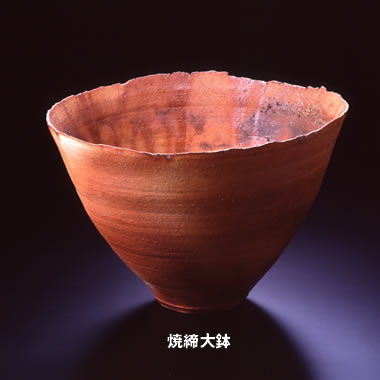

Kyo Tsuji
Plants are the sources for form and glaze
The white camellia glaze used on “White-Camellia Glazed Nest-Rose Camellia” is made using the ash from camellia bushes growing naturally in Hachijojima, a volcanic island about 300km south of Tokyo. The idea for the form of the vessels came from ‘split-pepper’ shaped appetizer dishes (warezansho mukozuke). This shape, together with the scarlet pattern inside, the title and the fact that this is a nest of pieces, all combine to suggest an abundance of camellias in bloom.
“When I think about the distance primeval era when communication through the written word was not widespread, there is no doubt that a wordless response to the world was adequate. So the expressions of beauty which emerged spontaneously in accordance with the purpose of each age were conveyed to people in ways which naturally encapsulated the intrinsic qualities of their time”.
‘Making Things’, Kyo Tsuji.Modern Japanese Pottery Vol. 12.
‘Design for Use’,Kodansha 1983
1: White Camellia Glaze, Flower-shaped Bowl
2: Lotus Leaf-shaped Plate
3: Large Bowl, unglazed
6: Shell-Patterned Large Bowl “Kon”